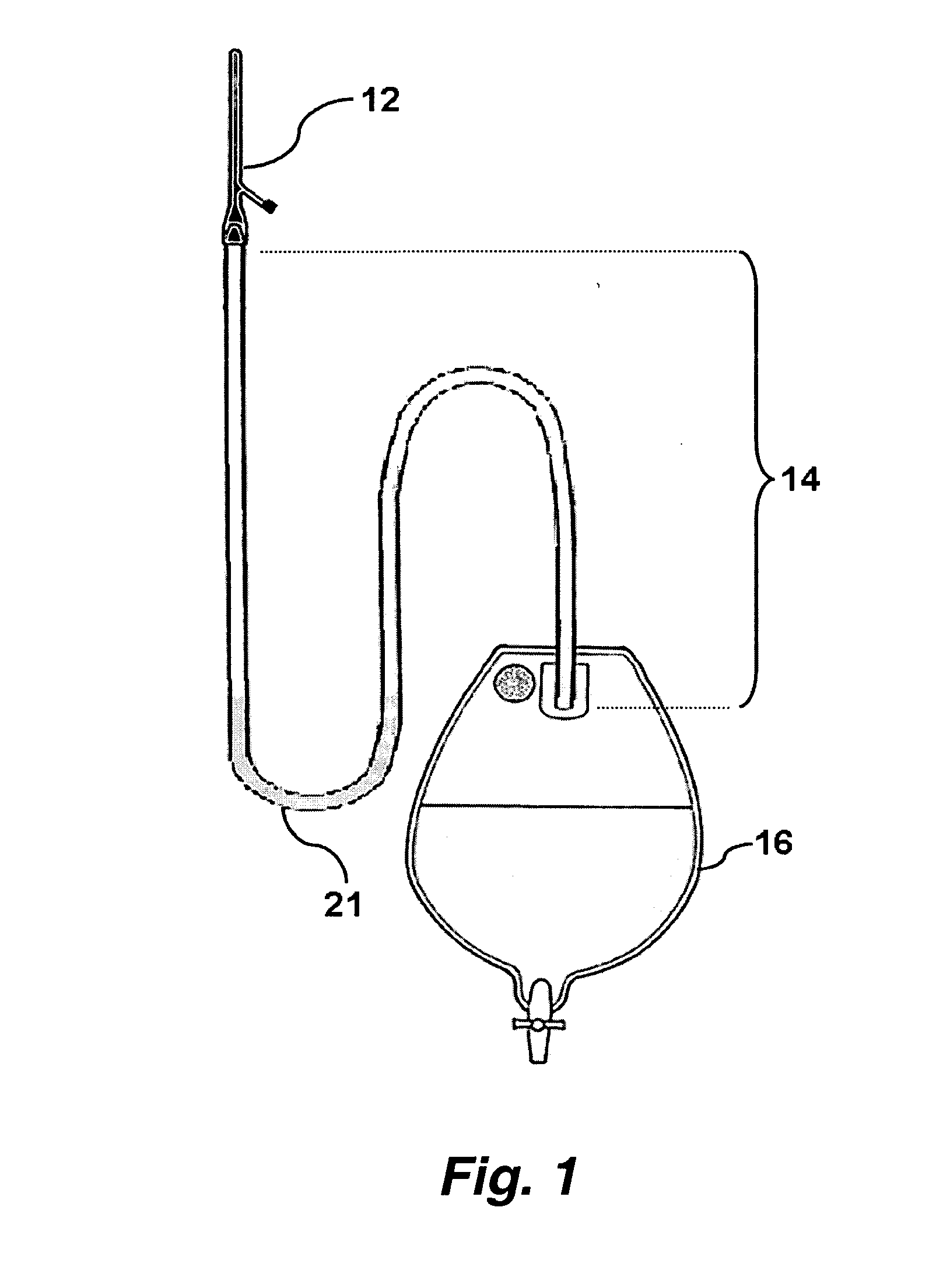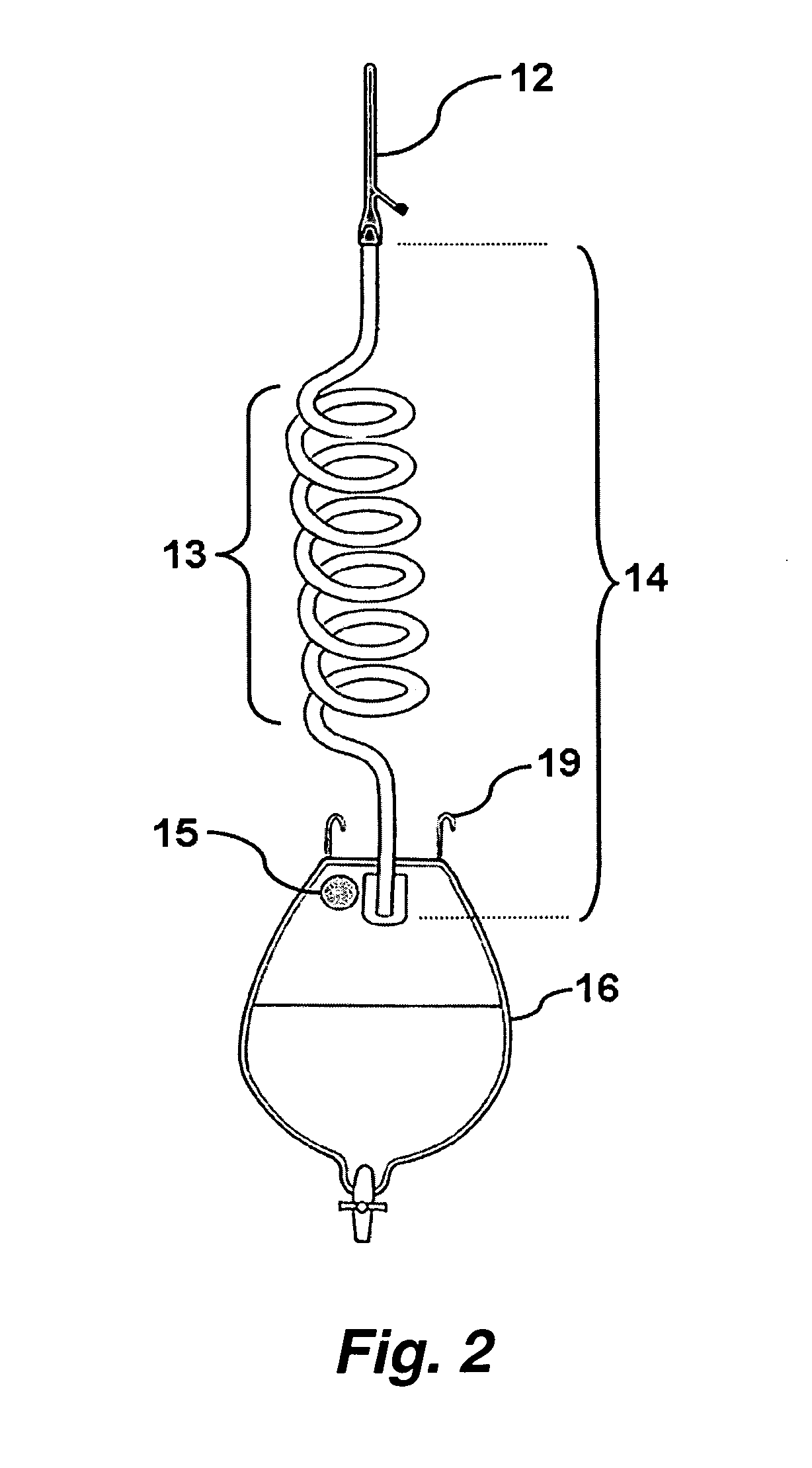Drainage system
a drainage system and bladder technology, applied in catheters, non-surgical orthopedic devices, medical science, etc., can solve the problems of potential lethal sepsis, and increased risk of sepsis, so as to reduce or eliminate airlocks, improve drainage from the bladder, and reduce backpressure.
- Summary
- Abstract
- Description
- Claims
- Application Information
AI Technical Summary
Benefits of technology
Problems solved by technology
Method used
Image
Examples
example 1
[0094] Suboptimal Bladder Drainage with Traditional Foley Drainage Systems: a Better Way
Objective
[0095] Foley catheters are assumed to completely drain the urinary bladder. We have routinely observed evacuation of large retained urine volumes upon manipulation of the drainage tubing. Drainage characteristics of Foley catheter systems are poorly understood. To investigate unrecognized retained urine with Foley catheter drainage systems, we measured bladder volumes of hospitalized patients with standard bladder-scan ultrasound volumetrics. Additionally, an in-vitro benchtop mock bladder and urinary catheter system was developed to understand the etiology of such residual volumes. Based on these findings, we designed and tested a novel drainage tube design that optimizes indwelling cathteter drainage.
Methods:
[0096] Bedside bladder ultrasound volumetric studies with a 3.5 mHZ transducer (Diagnotic Ultrasound, USA) were performed on hospitalized ward and ICU patients in the early m...
PUM
 Login to View More
Login to View More Abstract
Description
Claims
Application Information
 Login to View More
Login to View More - R&D
- Intellectual Property
- Life Sciences
- Materials
- Tech Scout
- Unparalleled Data Quality
- Higher Quality Content
- 60% Fewer Hallucinations
Browse by: Latest US Patents, China's latest patents, Technical Efficacy Thesaurus, Application Domain, Technology Topic, Popular Technical Reports.
© 2025 PatSnap. All rights reserved.Legal|Privacy policy|Modern Slavery Act Transparency Statement|Sitemap|About US| Contact US: help@patsnap.com



